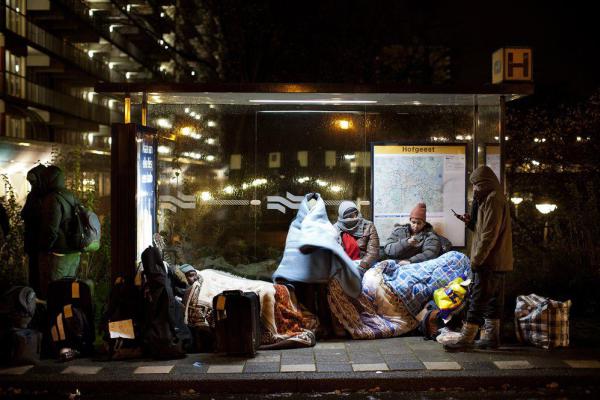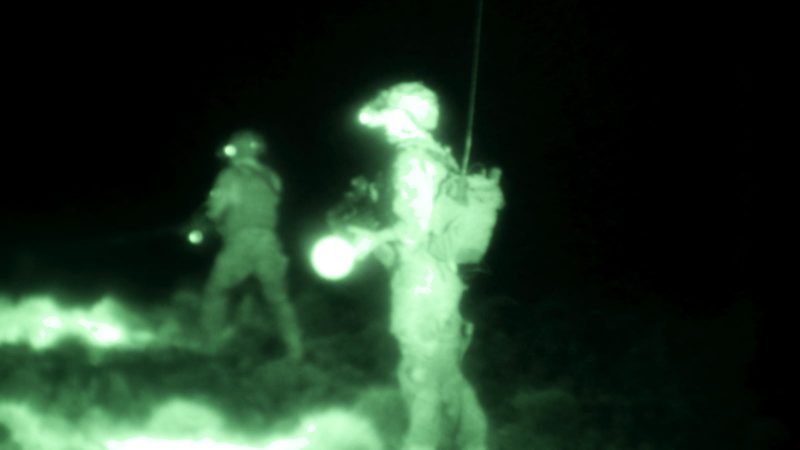Visibility in Crisis: Configuring Transparency and Opacity in We Are Here’s Political Activism
by Christian Sancto Fig. 1. We Are Here, Homeless on the street in the cold and rain after the eviction of camp Osdorp, Autumn 2012. Courtesy of the artists’ collective. We Are Here is the vehicle by which a group of Amsterdam-based refugees attempts to make visible the conditions of crisis that envelope its members’ lives. The group is comprised of refugees whose applications for asylum in the Netherlands are, for various reasons, no longer in process. Although they remain living in the Netherlands, they have no means of income, since they are not permitted to work. At the same time the government does not provide them with housing, forcing the group to move from squatted building to squatted building, or simply to live on the streets. The refugees formed We Are Here in September 2012 to provide them with a means for having their existence in the Netherlands recognized through collective action. The group’s website recounts that it emerged from an impetus to “make themselves visible” by “start[ing] a demonstration.”1 As interest in the group …


